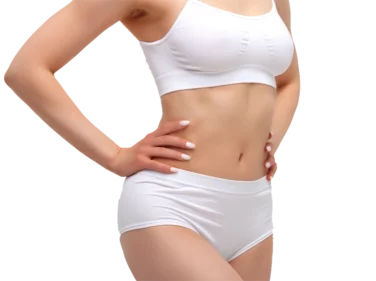The aim of liposuction is to radically and permanently remove excess fat from the “saddlebags”, hips, abdomen, back or thighs, which remains despite diet and exercise.
The principle
Liposuction, also known as liposuction or liposculpture, is a surgical procedure designed to remove unwanted fat deposits from certain areas of the body. This technique remodels and sculpts the body by removing excess fat that resists traditional methods such as diet and exercise.
Initially developed in the 1970s, liposuction has evolved considerably over the years. Today’s cosmetic surgery techniques are increasingly less invasive and offer more natural results with shorter recovery times. It should be noted that liposuction is not a weight-loss or weight-control method. It consists of remove localized, excess fat cells that will not reappear.

1 to 3 hours

general anesthesia

7 to 10 days

Approx. 1 cm
Why choose liposuction?
Improving physical appearance can have a positive impact on self-confidence and emotional well-being. Even with a balanced diet and regular exercise program, some areas of the body can retain stubborn fat deposits.
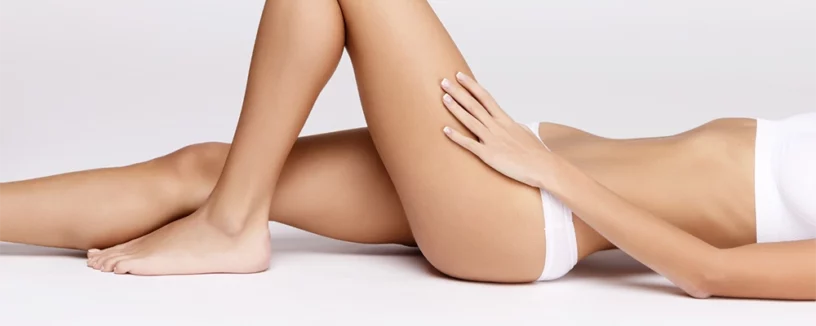
Liposuction is an effective and targeted way of removing localized fat. Liposuction can also significantly improve the figure by sculpting and reshaping problem areas. Whether to flatten the tummy, slim thighs or reduce “love handles”, this plastic procedure offers immediate and lasting results. The figure is more harmonious and balanced.
Liposuction is often combined with other surgical procedures, such as abdominoplasty or radiofrequency, for more complete and harmonious results.
Target areas for liposuction
- Abdomen
The abdomen is one of the most commonly treated areas. Liposuction can help eliminate fat deposits around the waist and create a flatter, more toned stomach. - Thighs
Thigh liposuction can target several areas, including the inner, outer and posterior zones, for a more sculpted contour. - Saddlebags
Liposuction effectively targets localized fat in this often stubborn area. The technique helps sculpt and redefine the contours of the hips and thighs for a more balanced, harmonious silhouette. - Hips
Love handles” or fat deposits on the hips can be effectively reduced with this procedure, contributing to a more balanced silhouette. - Arm
Arm liposuction is often performed to remove fat deposits that may accumulate with age or due to genetic factors. - Back
Fat deposits in the back can be particularly resistant to exercise. Liposuction can help eliminate these deposits, particularly in the bra and lower back areas. - Knees
Fat around the knees can be difficult to eliminate. Liposuction can help sculpt this area for a more toned appearance. - Chin and Neck
Liposuction of the chin and neck can help eliminate the double chin and create a more defined jawline.
When is liposuction needed?
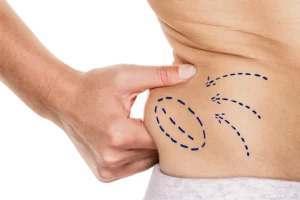 Liposuction is not a weight loss solution. It is preferable to be relatively close to your ideal weight, but with areas of localized fat for optimal results.
Liposuction is not a weight loss solution. It is preferable to be relatively close to your ideal weight, but with areas of localized fat for optimal results.
Good skin elasticity is essential for effective skin retraction after fat removal, contributing to more natural results. A compression girdle worn after the operation will help. Radiofrequency can also be used to optimize skin contraction during and after cosmetic surgery.
To maintain long-term results, it’s crucial to commit to a healthy lifestyle, including a balanced diet and regular exercise.
The liposuction procedure
Preliminary consultation
Prior to any liposuction procedure, an in-depth individual consultation takes place. The specialist then provides detailed information on the plastic procedure, taking into account the needs and expectations of each patient. A full quotation is also provided.
If the decision to proceed is made, further appointments are scheduled to measure the areas to be treated and discuss the surgical procedure in detail. An anesthesia consultation is also scheduled.
Liposuction involves the use of a cannula, a hollow metal tube, which is inserted through small incisions in the skin. The cannula is then moved up and down to break up the fat cells, which are then aspirated using a surgical aspirator.
Liposuction incisions are short and discreet, as they are usually hidden in a natural crease.
The duration of the procedure varies according to the amount of fat to be removed and the number of areas to be treated, and can range from 45 minutes to several hours. After a visit to the recovery room, you will rest in a comfortable room before returning home.
Recovery
The recovery period depends on the complexity of the cosmetic surgery procedure. Bruising and swelling are to be expected in treated areas, but these side effects disappear within a few weeks. It is essential to wear a compression garment day and night. Our team will provide you with all the information you need during post-operative consultations.
The result
For a few weeks, a sensation of “sleeping skin” may occur. The compression girdle must be worn day and night for 2 to 6 weeks, depending on the surgeon’s instructions. A period of 2 to 3 months is ideal to appreciate the results of liposuction, until the treated areas have regained their suppleness.
Post-operative follow-up
Follow-up appointments are scheduled to ensure that everything is going well and to evaluate the results of the intervention. Our medical team will be happy to answer any questions you may have.
Resuming work after liposuction depends on the type of professional activity, but can be envisaged as early as day 3 for light work. Sports activities can be resumed around week 4.
For more information, please see our blog post.
FAQ
Is liposuction a solution for weight loss?
No, liposuction is not a solution for weight loss. It is designed to improve the figure by eliminating localized fat deposits that do not disappear despite diet and exercise.
Can liposuction remove excess skin?
Liposuction does not remove excess skin. However, the skin can tighten naturally a few months after the operation, by wearing a support panty for several weeks afterwards.
Is liposuction effective against cellulite?
No, liposuction is not effective against cellulite. It reduces the deep fat layer but does not treat cellulite.
What happens if I regain weight after liposuction?
Residual fat cells can swell up again if you regain weight. To maintain results, we recommend a healthy diet and an active lifestyle.
What are the risks of liposuction?
Like all surgical procedures, liposuction carries risks such as infection, bleeding and complications related to the anesthesia itself. Skin irregularities, such as bumps or hollows, may occur, especially if a large amount of fat is removed. Although very rare, there is a risk of cardiovascular complications such as blood clots or fat embolism.
How much does it cost?
The cost can vary according to a number of factors, such as geographical area and the expertise of the plastic surgeon.
The number and size of the areas you wish to treat will also influence the cost.
You’ll also need to take into account additional costs such as pre-operative consultations, anesthesia and post-operative care, which are not always included in the estimate. It is important to discuss costs in detail with your specialist during the initial consultation. Make sure all costs are clearly explained to avoid any surprises.
Make an appointment
See also
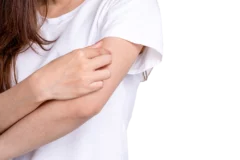 Body contouring surgery
Body contouring surgeryArm lift
Arm lift, or brachioplasty, is a procedure that revitalizes the inner arm. This procedure removes excess skin, giving the arms a toned, youthful appearance.More information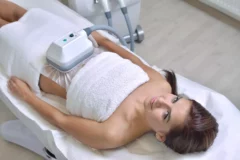 The body
The bodyCryolipolysis
Cryolipolysis: a non-invasive solution for eliminating body fat using cold . It consists of eliminating fat cells by cooling them to -8°c, thus destroying them naturally and permanently.More information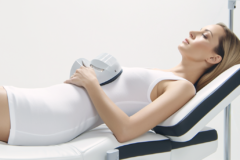 The body
The body